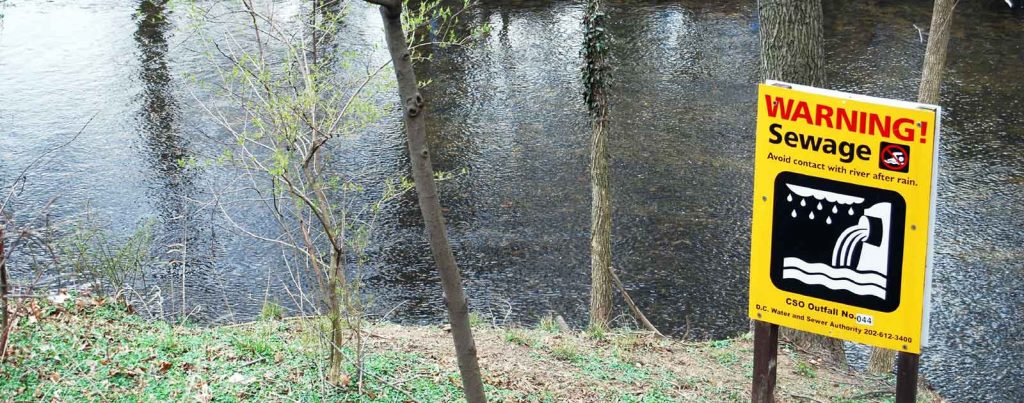London & Thames Valley storm sewer overflows

Sewage discharge stats for London & Thames valley:
Water companies in England have recently suffered negative publicity due to the reported discharge of raw sewage into surface waters including rivers and the sea. Water companies may legally allow this to happen under certain conditions stipulated in permits issued by the Environment Agency. Unfortunately, permit conditions are sometimes breached resulting in illegal discharges. It is not a new problem, and many countries across Europe and America face the same challenges. The header photo shows a sewage warning in the USA (taken by John Sonderman).
Sewage discharge data is collected in real-time by water companies using automatic event duration monitoring equipment. Thames Water makes their data available through an open data API feed providing information on over 450 discharge locations in London and the Thames valley.
The chart below shows how many locations recorded sewage discharges over the last 10 days. Without information to the contrary, the presumption here is that all discharges were legal and in line with Environment Agency permit conditions.
The most usual reason for a spike is rainfall. Combined sewer systems which take sewerage from homes and rainwater from street drains are particularly susceptible. These systems include valves known as combined sewer overflows allowing the controlled release of sewage if there is a danger of the sewer capacity being exceeded (for example, due to heavy rainfall). Without this safety valve system, back-flooding of sewage into streets and homes might occur. One solution is to increase the capacity of urban sewers such as in London where the Thames Tideway Tunnel “super sewer” is under construction. Raw sewage discharges can also occur from storm overflows built into pumping stations and treatment works.
The table below lists the most recent sewage discharge alerts by location.
The following chart lists the 15 waterbodies most affected by sewage discharges in the last 30 days in London and the Thames valley.
*Thames Water notes that EDM monitors are sensitive and factors such as the movement of a weed growing in front of the monitor could trigger an alert, indicating that the overflow is active when it isn’t. Thames Water share their data exactly as they receive it.